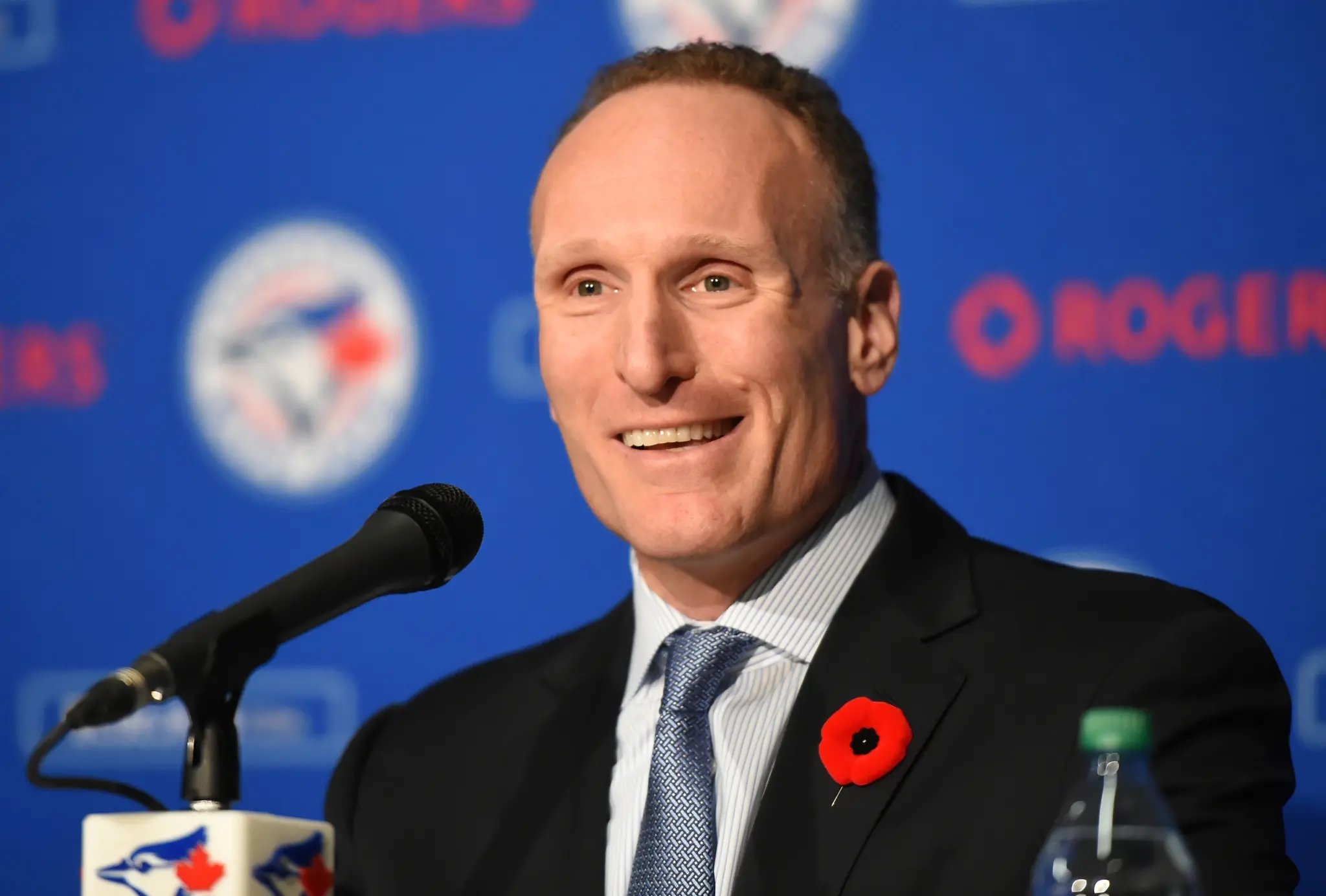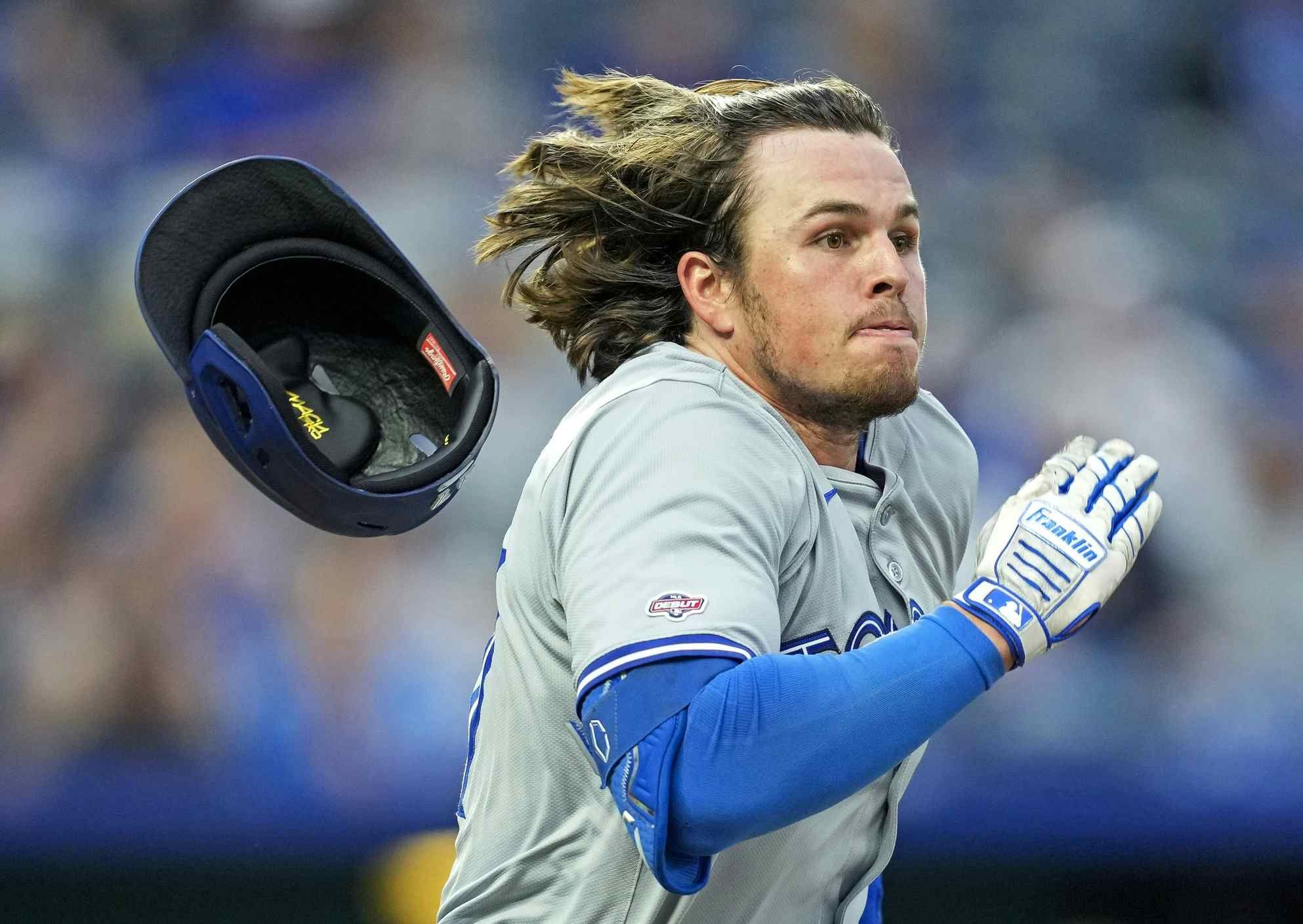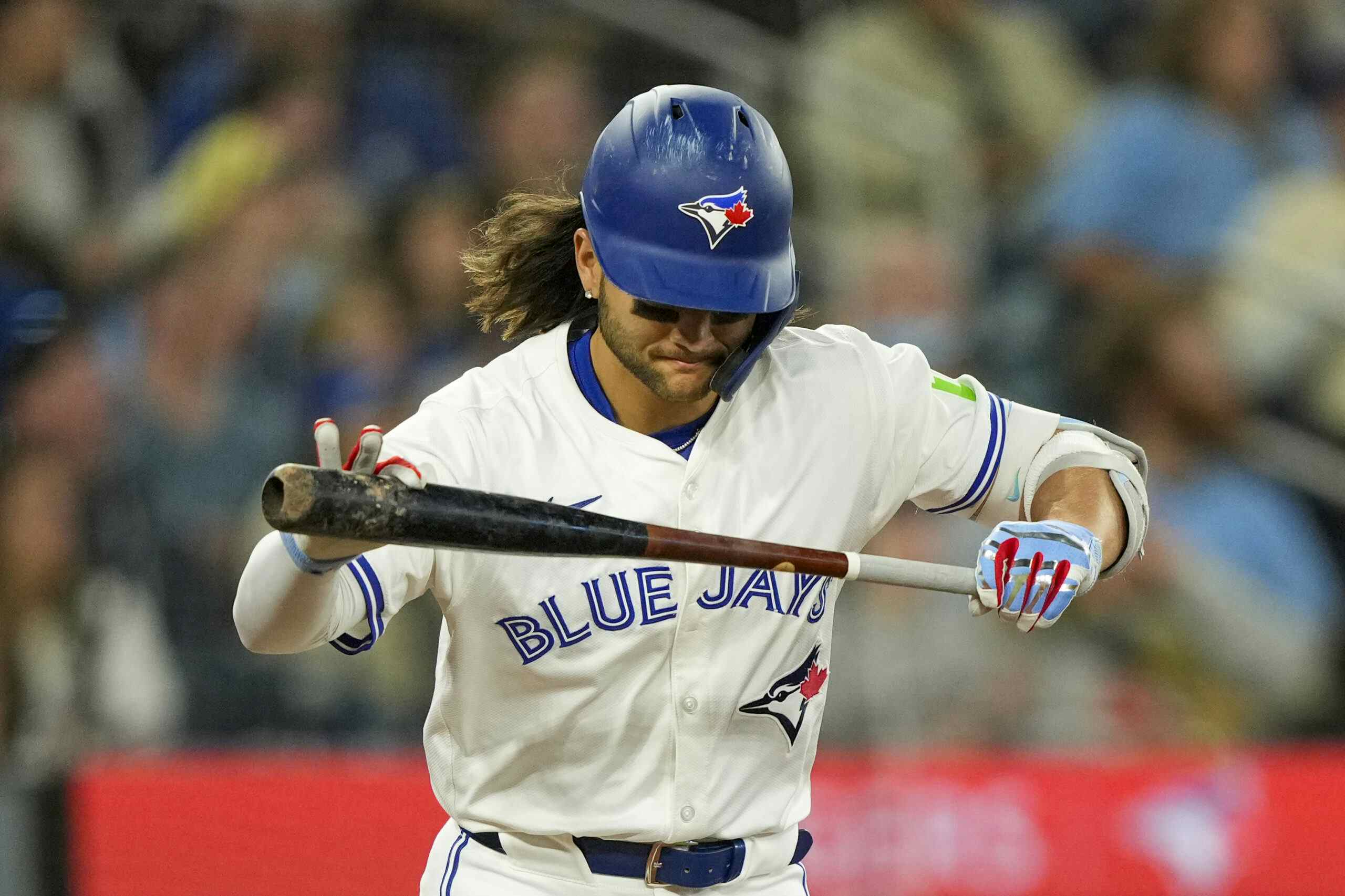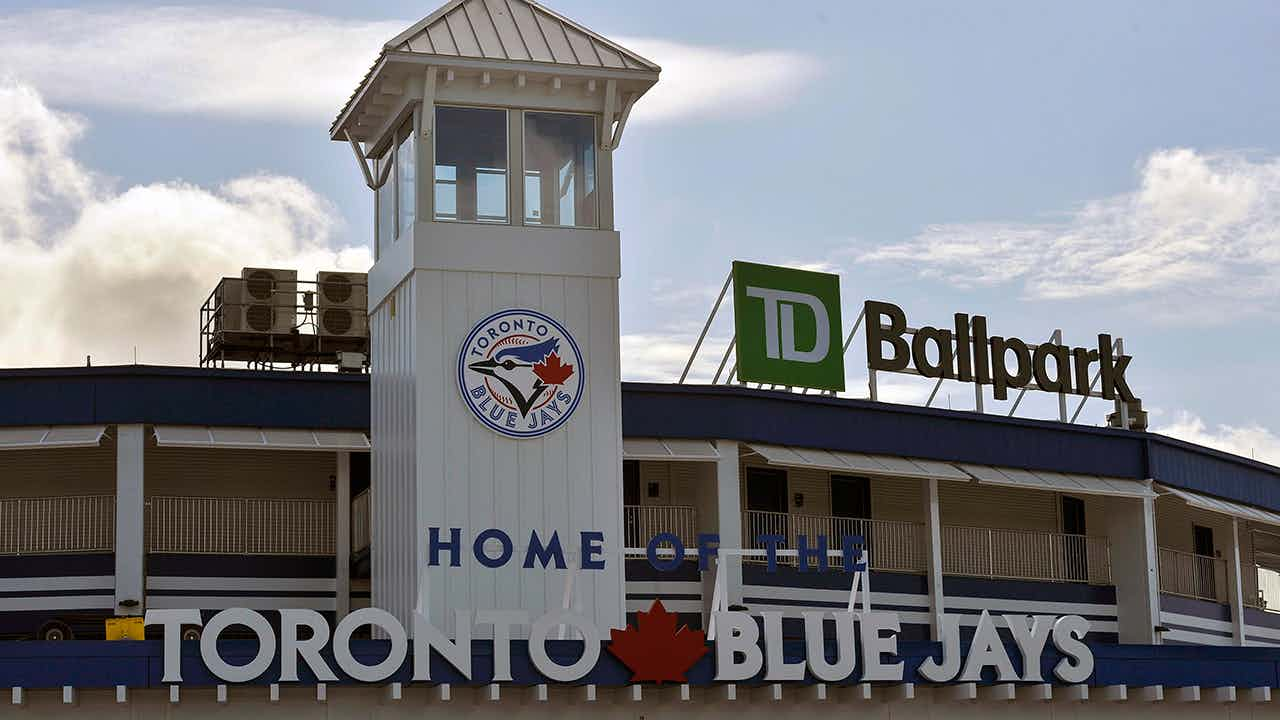Shapiro Speaks!: On Atkins, Modernizing Baseball Ops, the Fans, the Future, and Rogers Centre Renos

Mark Shapiro is a sharp dude and we’re lucky to have him.
I’m sure that statement will come off as hopelessly fanboy-ish to some, but it’s pretty much all I could think while re-listening to the interview the Jays’ president had with Mark Feinsand of MLB.com last week. The knee-jerk dislike that some fans have for Shapiro really says a whole lot more about them than it does him.
Which is by no means to suggest that the guy is perfect or anything, but holy shit does he sound like he knows what he’s doing sometimes — much to the surprise, I’m sure, of those same knee-jerk cretins.
Plus, in the Feinsand interview, he gives some fascinating hints as to where this organization is going, where it was coming from, and where things like stadium project are potentially headed.
It’s great stuff! And Feinsand has done us all a solid by transcribing bunch of the back and forth in a piece at MLB.com. In there you’ll find Shapiro talk about his early days in an MLB front office, why he chose to leave Cleveland for Toronto when he did, what he thinks of the farm system, give some evasion on the big Josh Donaldson question, provide a more general answer about trading popular players, and share his description of what success here will look like (which doesn’t necessarily include a World Series win, because “there’s so much randomness when you get into the postseason, so to strictly base all of your success on whether or not you win a World Series, I think you’re probably setting yourself up for a pretty fragile existence”). (Bingo).
I encourage you to go read it! But I also felt that the stuff that wasn’t transcribed was actually a whole hell of a lot more interesting than the stuff that was — especially for a Blue Jays fan.
So I’ve gone ahead and transcribed a whole bunch of that other stuff myself. Let’s have a look!
(You can listen to and/or download the interview in full here.)
On his role in baseball operations and his working relationship with Ross Atkins…
What it’s done moving over here to Toronto is allowed me to get back involved in baseball operations, where I feel like I can still make a difference and help and make an impact. Ross is still the GM day to day, I am not doing the player moves, I’m not doing the — when there’s an injury, who is coming up. But Ross I can help, because he’s in his infancy, or his first couple years of being a GM. So I can spend time with him. He wasn’t an assistant GM, where Chris [Antonetti, who became Cleveland’s GM when Shapiro was promoted to president after the 2010 season] was. So I can spend time with Ross as he walks through some of the challenges as he grows in that role. And I would say in five years Ross probably is not going to need me either. But right now I can still help, and I can still be a resource for him and for the organization, as we evolve over here and grow over and really modernize some of our systems over here.If I wasn’t here Ross would still be great — he’d be fine. But I’m one more set of experiences and one more set of perspectives that hopefully can help both him and some of the other people as we continue to get better here.
OK, sure. Fine. Starting kinda slow here. But what really sticks out to me is the stuff about modernizing systems. I feel like I’ve harped on this issue a whole lot more since Alex Anthopoulos left — i.e. once it became a whole lot easier! — than I did when he was here, and that’s probably unfair. But it’s not the first time Shapiro has been so casual about what he thought of certain aspects of the organization he inherited — and won’t be the last time in this interview, either.
On ‘modernization’…
When I first became GM, Mark, our greatest advantaged lied in the fact that the large market teams were strictly focused on free agency as kind of a way to exploit their resources. At some point, and I think Theo [Epstein of the Cubs, who he had earlier called “probably the best executive in the history of baseball”] really is the one that started this. Someone realized — Theo realized — that if we run a large market team like a small market team, and exploit our resources not just on major league free agents, but on player development and scouting and analytics and front office alignment and staffing and resources and every tool we’ve got, then we’ve got a chance to be really effective. And then everybody else course corrected to him. We lost, as a small market team, the greatest competitive advantage. And now we’re looking for that in other places. So, that has dramatically changed, from raising hands and stat books on our laps and scouting reports — files open on desks — to an incredible amount of proprietary analytics and analytics staffs. Front offices have gone from six guys to twenty guys.
I don’t want to be get hung up too much on the Alex thing, but let’s take a moment here and continue with this, because the former GM is as good a prism as any through which to try to understand Shapiro, I think.
Us Blue Jays fans know Anthopoulos — we know the mythology, the history, the kinds of deals he made, the way his teams worked — and there are certainly some apparent contrasts between his way and Shapiro’s, at least based on how Shapiro talks about what goes on behind the scenes. That doesn’t mean that one way or the other is necessarily better (though, at this point, I’d be lying if I said I didn’t think one is). Maybe we should be worried about Shapiro’s willingness to run his organization like a whole lot of others already do and appreciate Alex’s somewhat less orthodox ways. I’m certainly not going to suggest Alex Anthopoulos wasn’t a good executive, didn’t build an incredible team in 2015, or that he didn’t leave plenty of great pieces in place *COUGH* Vlad *COUGH*. But there wasn’t a whole lot of Theo to his Blue Jays organization.
We’ve known that for a long time, having learned it first hand when John Farrell criticized the Jays organization during his first year in his Boston dream job, in 2013.
In case you’ve forgotten what he said (which you shouldn’t have, because I’m pretty sure it’s the single most important quote about the Blue Jays front office for at least the last decade), here’s Farrell, via Mass Live:
There are very distinct differences and it starts, I think it starts, at the top. And the reason I say that: I found Toronto to be a scouting-based organization, which to me is on one plane, one-dimensional. You’re looking at tools. Here, it’s a player-development based system. It’s the paths of the individuals that are running the organization. And that’s not to be critical.“We all know that there’s three different veins in this game that people advance (through): baseball operations, scouting, player development. Well, in the player-development vein, you’re going to look at things in three dimensions: mentally, physically, fundamentally to address and develop people, or develop an organization. I think as a scouting base, you go out and you evaluate the physical tools. And that’s kind of where it ends, or that’s the look at that time. That was my experience, that was my opinion.
Farrell, of course, worked under Epstein in Boston as the Red Sox pitching coach. He was hired back by then-GM Ben Cherington, who has now moved over to the Jays under Shapiro. Farrell also worked a long time in Cleveland, joining the club in November of 2001 as director of player development. Mark Shapiro had been promoted to the GM’s chair just one month earlier. Farrell served under Shapiro for five seasons before leaving to join Epstein’s Red Sox as pitching coach, where he’d work with his former Cleveland teammate, Terry Francona — who had served for one season, 2001, as a special assistant to Cleveland GM John Hart (who employed an assistant GM by the name of Mark Shapiro).
Farrell may have lost the battle, in terms of defining his vision of the Blue Jays’ front office, but his fellow player development people have won the war.
Shapiro wants to take the organization that Farrell criticized in 2013 for being too one-dimensional and bring it up to speed with the rest of the industry. I’d imagine some of that had already begun to happen on Alex’s watch, but when you think about it in these terms, it’s hard not to notice certain quotes from the new president jump out at you as possible criticisms of the former regime. Though there’s also obviously praise in there too — especially given how (relatively) little turnover there has been since he arrived.
To that point, when later asked how he went about assessing an organization he was mostly unfamiliar with when he got here, Shapiro explains:
I think the most important answer to that is that it would have taken a long, long time, had we made changes to a lot of people. But Joe Sheehan, instead of changing Joe we promoted him from manager of analytics to director of analytics to assistant GM in a short period of time. We’ve got a host of other people that are still here that were here before, so they help you, because they know the situation and the organization. They know what was traded, they know what was still here. And you’ve got good people around you that every day are helping you assess where you are. The most important thing is to have a plan and a strategy, and to stay consistent to that — continue to evaluate it and have it evolve, but stay consistent to a set of values and a vision you’re driving towards. And once you have an organization aligned behind that, great things can happen and you continue to have a consistency in the work you do and the decisions you make.
But also at one point, in what might be a dig, he tells Feinsand, “If you want to have a sustainable, championship team, you’d better be paying attention to the details — all of them, up and down the organization.”
The Jays formerly, for all the stuff we’d hear about Anthopoulos and stats and being a bean counter and a pencil pusher and whatever else, were actually quite old school. This maybe feels a bit easier to see with Shapiro shining light on what he seems to think were organizational deficiencies handed to him. (And this speaks nothing to the more clear actions he’s taken on the business side, in terms of modernization, such as firing Stephen Brooks and implementing dynamic pricing for tickets — a system that would have made the club millions in the back half of 2015, when demand for tickets went through the roof, had it been in place.)
One other interesting tidbit on the modernization subject, I thought, was this: when asked if sports science is the biggest area of opportunity for clubs to get an edge, Shapiro actually balked.
I think on the medical performance side, recovery side, there’s still opportunities. Whether they’re the biggest ones, I’m not sure. I still think, crazily enough, that coaching and developing is probably something that we don’t do extremely well as an industry, and there’s probably huge opportunities there as well.
There has been much ballyhoo about the Jays and their new high performance department, but evidently it’s just one of many tools, and just one of many opportunities the club is exploring. This seems… good, no? Or, dare I say… better, no?
On the fan base and the future…
I’ve only seen a very limited window, so it’s almost hard for me to appreciate, except from hearing people around the building talk about what it was like. All I can tell you is that, from just 10 days ago seeing half of Wrigley Field be Blue Jay fans, to watching us in Seattle, which is thousands of miles away from here, and seeing the entire ballpark full of Blue Jay fans that are coming down from British Columbia that aren’t even near Toronto, to watching the steady stream of people come in here every night — over three million fans — it’s remarkable. I don’t know how fragile it is, and I’d love to say that we’re never going to find out, but the reality is that the way this team was built is going to cause some correction at some point — that we’ve kind of got to retool and go through, and regenerate a younger team at some point. I’m hoping that what we’ve done is kind of ignite not just a love for winning, but a passion for the Blue Jays and baseball, because it’s incredible to feel now.. . .[When assessing whether to buy or to sell at the trade deadline], I think first you look objectively at your circumstance and your situation. You factor what your people are telling you your chances are. Then you subjectively look at who you have in place and what you believe — you look at the other situation and circumstance. We talked about what’s happened in Toronto, we’ve talked about how recent that really is, and I do think that I look out at the three million fans or the tens of thousands of fans that come here every night, and I think our job is to give them something to cheer about. So if we have a chance that we may — while the intellectual exercise may say we should probably blow it up and rebuild — that the decision you arrive at may not be that. Because, you know, hey, what we have here is so recent and so special, that we need to do everything we really can to keep it open as long as we can, yet still balance that with a sense of urgency to infuse talent every opportunity. We’ve done that in small ways, whether it be Teoscar Hernandez this year, whether it be the Liriano trade last year, where we also got two prospects. We feel like we’re focusing on a duality right now. At some point we may turn more one way than the other. It may not be the fastest way — it’s not the way Cubs and the Astros built what they’re doing, but it’s the way that fits our situation. Every situation is different.
I don’t really have much to add here, because I’ve been basically saying this for a long time. The Jays are going to do as much as they can to win in the present while doing nothing — no trading key prospects, no signing guys who require draft pick compensation or too many years of term — to jeopardize the work they’re trying to do to build for the future. Yes, they’re losing future value by not trading Josh Donaldson for as much as possible as soon as possible, but they’ll also lose future value — future brand value, future gate receipts and TV ratings (which translates to future budget) — by giving up on 2018 and 2019 before they even start. The situation is telling them to spend what they can on short-term deals, dig for some cheap diamonds, and hope that enough players in 2018 are at their best to give them a shot and keep this thing going — just like they did in 2016 and 2017. It’s a tough line to walk, and getting tougher, so next July’s trade deadline could be very interesting. But by putting off the “correction” until then they do all kinds of right by the fan base in the short term, and don’t damage the long-term nearly enough, all things considered, to justify blowing it all up now.
On changes to the Rogers Centre…
At the very simplest level we want to transform it from a stadium to a ballpark. It was built in an era when symmetry, generic concrete structures — multipurpose was a big part — and we want to make it a baseball ballpark. That’s going be a challenge, because it’s got four walls and a roof — which I’m very happy about in April and May — but I think we can do it. It’s a great challenge. We also need to adapt it from the standpoint of, when this stadium was built, just like Progressive Field (or Jacobs Field), it was pretty much, a) you were competing against standard definition television, so it wasn’t that hard to differentiate from the home product — which is not the case anymore. Not only do we have HD TV, surround sound, great home product, we also have mobility where people can watch it in HD everywhere they go. So you’ve got to create a more compelling fan experience. And you’ve got to allow for the fact that different people want to watch the game in different ways. Some people just want to be at the game in a great bar that happens to be in the stadium and kind of casually look at it. Some people want to sit from base to base and score the game the same way they always have — you’ve got to provide them that. And some people want to bring their family and have a lot of activities for their kids. So, I think you need to target the different segments of your fan base. I think you need to provide them with different ways to experience the game, and understand that that’s going to be important because it’s got to be compelling. The number one thing that can [unintelligible] on is winning, but you’ve got to have other things besides that that in a down cycle will also create a desire to come to the game.
We’ve heard most of this before, but the dig at symmetry? Swoon! You fuck with those ballpark dimensions, Mark! Let’s really jazz this place the hell up!
Recent articles from Andrew Stoeten





